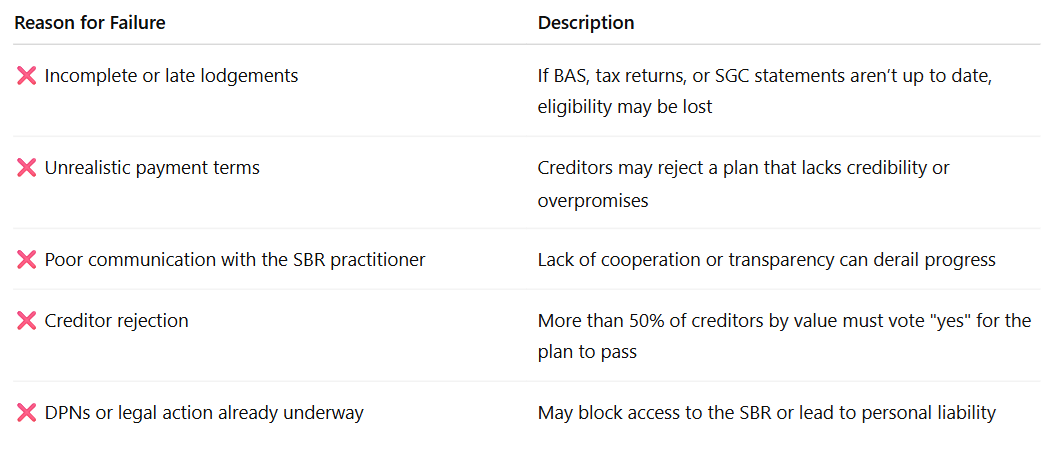What Are the Risks of a Small Business Restructure Failing?
A Small Business Restructure (SBR) is designed to give struggling companies a second chance by reducing or reorganizing their debts under a formal plan. But like any turnaround process, not all restructures succeed. Understanding the risks of failure is essential for business owners, directors, and advisers before entering the SBR process.
What Are the Risks if an SBR Fails?
1. Liquidation Is the Most Likely Outcome
If the SBR plan is not approved or fails during implementation, the company may have no choice but to enter voluntary liquidation. This results in:
Sale of business assets
Termination of staff
Directors losing control
Investigation of director conduct by the liquidator
2. Loss of Creditor Confidence
If creditors (especially the ATO) reject the SBR plan, it may indicate that they no longer believe the business is viable. This can:
Harm future negotiations
Increase the likelihood of winding-up applications
Damage the company’s long-term reputation
3. Directors May Face Personal Liability
If the restructure fails and the business is liquidated, directors may become personally liable for certain unpaid debts, such as:
Superannuation Guarantee Charge (SGC)
PAYG withholding (if DPNs were issued)
Debts personally guaranteed by the director
4. Legal and Administrative Costs
Even a failed restructure will involve fees for:
The Small Business Restructuring Practitioner (SBRP)
Legal or accounting advice
Lodgement and admin processes
These costs are typically non-refundable.
5. Damage to Business Reputation and Trust
Engaging in an SBR and failing to complete it can:
Affect relationships with suppliers and lenders
Signal financial instability to stakeholders
Result in loss of contracts or clients
Common Reasons an SBR May Fail
How to Minimise the Risk
Engage early: Don’t wait until legal action or lockdown DPNs are issued
Stay compliant: Lodge all tax obligations and returns on time
Work with a qualified SBR Practitioner: They’ll guide you through the process
Be realistic: Don’t overpromise in the restructure plan
Stay transparent: Keep the SBRP and ATO informed throughout
Final Thought
While an SBR offers a legal and powerful tool for businesses with tax debt to survive, failure to follow through can have serious consequences — including liquidation and director liability. It’s essential to assess eligibility properly, act early, and get professional advice to ensure the best chance of success.
References
Australian Securities and Investments Commission (ASIC) – Restructuring and the restructuring plan
Australian Taxation Office (ATO) – Director Penalty Notice
Corporations Act 2001 – Part 5.3B: Small Business Restructuring

